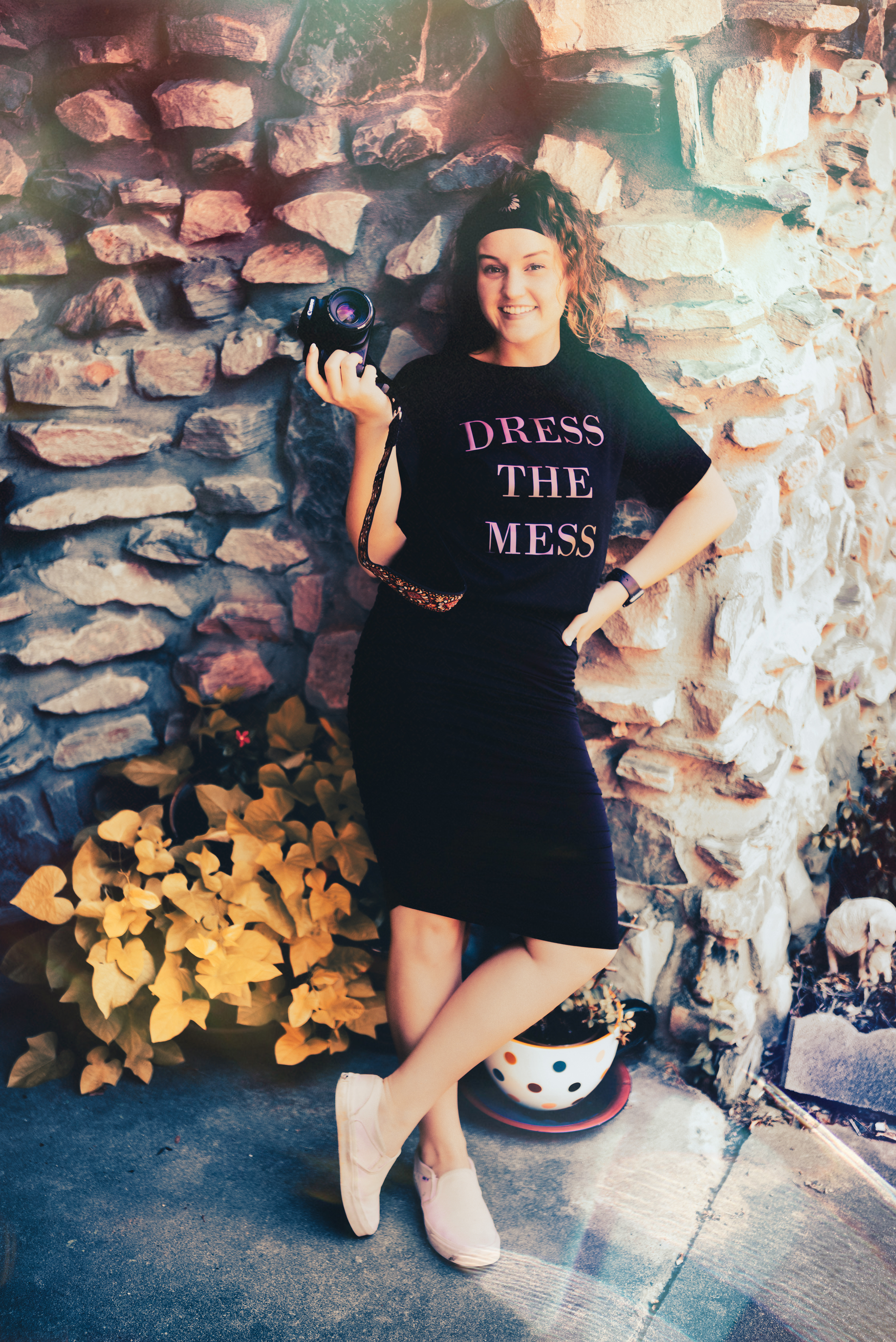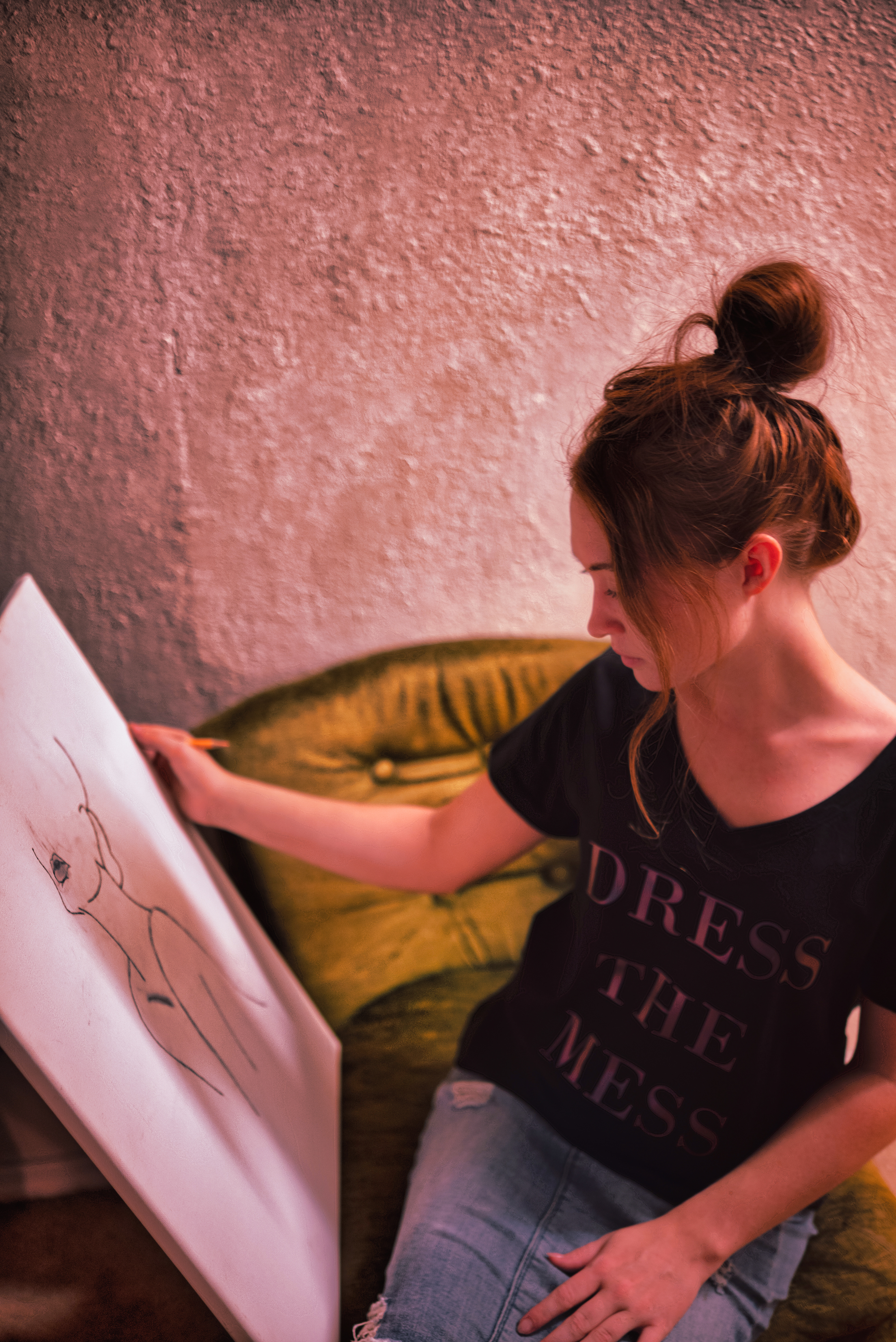“The thesis is an evolutionary process that begins with an idea that evolves over several weeks and ends with an impactful visual design solution” Victoria Alba.
The "Dress the Mess" social media campaign involved creating a social media page on Instagram and a group activity guerilla marketing bringing awareness to art therapy.
Understanding that on social media, people follow friends and hashtags that lead them to pages that promote social awareness campaigns, the vision was to create a page that would generate conversation. The research by Heath and Heath noted that storytelling within a campaign drive is important for it incorporates brand awareness (2008). Through the Instagram platform Fortitude by Design, used the narrative qualities found in graphic designs. Instagram was chosen for it was noted through the research presented by Pew Research Center that it is the largest platform for young adults 18-29 and therefore applied to the target audience of the “Dress the Mess” awareness campaign. In addition, Instagram provides the resources for 24-hour interactive opportunities to reach the stakeholders.
The process included creative images, graphic designs, quotes, and creating fashionable t-shirts to promote the "Dress the Mess" campaign. By incorporating resources such as the Adobe Creative Cloud and IanBenard.co I was able to purchase stock images and graphic resources to use throughout the campaign. The website www.typ.io.com was used to compare typefaces to find complementary fonts. This campaign focuses on San Serfs and Bondoni and Strings for some dramatic flare.
Hashtags were used to generate audience participation on Instagram and Tic Tok such as #dressthemess #fortitudebydesign #emotionalhealing. Furthermore, the use of music was used to emotionally attach a message to the reel. Interestingly, tagging the artist of the song not only gave them credit it also brought their stakeholders to view the "Dress the Mess" campaign page. Another point of interest was there were more views on the Instagram reels than on Tic Tok.
I looked for expressions on faces, angles, textures, and colors when using the Adobe Stock images program to purchase photos. It was vital that I could connect what I was writing about in the research paper to the graphic design and that it would hold its own story through imagery on Instagram. Once I discovered a graphic that would work, the next step was how can I manipulate it through design to make it personal to the “Dress the Mess” brand. Finally, I would download the image into Adobe Photoshop 2022 and change the color schemes and lighting, add the logo or pull images out until the results were either utterly different than where I started or subtly enhanced.
During this part of the process, seeing the paint on the faces that showed so much raw emotion, it dawned on me, “You’re the Canvas.” So, going to my photos, I began to play with paints and colors creating a piece of expressive art that stated: “You’re the Canvas,” representing emotional trauma and the freedom of expressing oneself through artistic creativity.
The graphic images were used throughout the “Dress the Mess” campaign, offering a good balance between type, photography, and visual imagery. Each illustration was produced to help visualize the core message of how art therapy directly relates to mental and emotional trauma and healing.
The visuals were created to be dramatic, theatrical, and vibrant. The graphics are used throughout the social media campaign and throughout the research working together to unify the overall project. Finding a resource that promotes art therapy could be a vital part of the healing journey for young adults dealing with emotional trauma. Graphics of the various forms of art therapy allow consumers to become educated visually. Regarding the visual solutions for this project, it is essential to create visually stimulating content. Additionally, it needs to deliver a message of emotional connections to clearly understand how the campaign connects art therapy to emotional healing.
The call to action of the “Dress the Mess” art therapy awareness was by far the best part of the research thesis experience. A simple white t-shirt with the “Dress the Mess” logo provided a canvas for people to use art through painting to become the voice of their emotions. It allowed them to address emotional trauma without having to verbalize feelings that could not be expressed.
In addition, it provided transparency through the community of those who participated, bringing awareness to how easy it is to use art therapy to address emotional trauma. The research noted that positive self-presentation gives young adults the independence to express themselves on social media. The call to action connected individuals as advocates of art therapy. The models used for this campaign were encouraged to post their t-shirts on Instagram with the hashtag “#dressthemess”. In addition to the white canvas t-shirts, I created black t-shirts with the “Dress the Mess” logo to connect different forms of art therapy such as dance, photography, and music to the campaign.
The process involved using the Cricut Maker cutting machine, heated iron-on vinyl, a heating press, and a little time and effort. This part of the project was taxing and relaxing at the same time. Yet, the results are rewarding.
Works Cited
Heath, Chip, and Dan Heath. Made to Stick: Why Some Ideas Survive and Others Die. Random House, 2008.
Pew Research Center. “Social Media Fact Sheet.” Pew Research Center: Internet, Science & Tech, Pew Research Center, 11 Jan. 2022, https://www.pewresearch.org/internet/fact-sheet/social-media/.

















